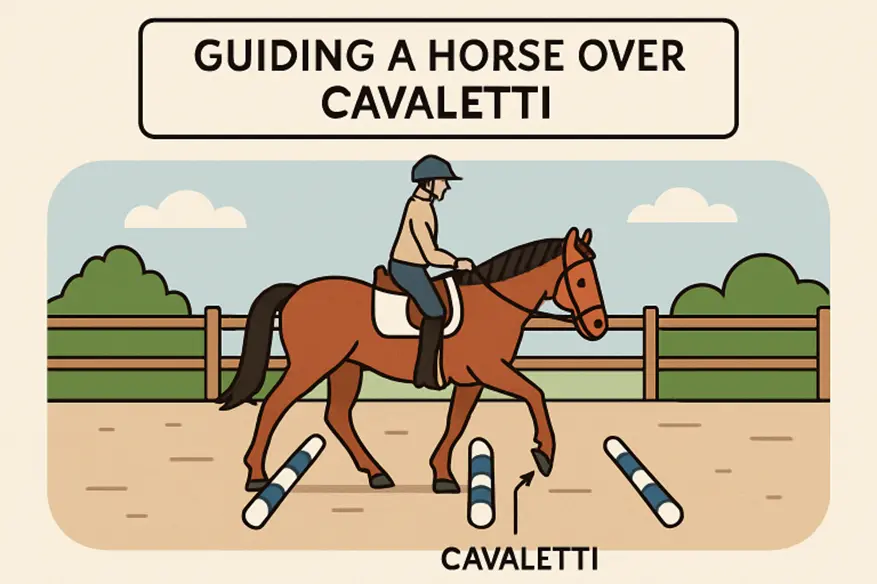Creative Cavaletti Exercises for Horse Training
Introduction to Cavaletti Training
Cavaletti exercises offer a dynamic approach to developing your horse’s athleticism, responsiveness, and enjoyment in training. Whether you’re aiming to enhance your horse’s rhythm and balance or looking for ways to keep your sessions fresh and engaging, incorporating horse jump cavaletti into your routine can be transformative. These simple, adjustable tools provide endless options for horses and riders of all levels, strengthening both body and mind. With their roots in classic horsemanship, cavaletti exercises can be adapted from groundwork to advanced mounted work. By focusing on systematic progress, you can introduce new patterns and challenges, helping your horse to think, stretch, and move with greater control. Both novice and experienced riders can benefit from varied cavaletti designs, which build foundational skills crucial for all disciplines.
Cavaletti training is pivotal in equine conditioning, enhancing confidence, physical ability, and preventing injuries. It helps maintain horse suppleness, balance, and joint health while offering variety to flatwork. Originating from Italian cavalry officer Federico Caprilli, modern cavaletti skills incorporate adjustable poles tailored to optimize each horse’s strength and coordination. By promoting rhythmic movement and building core strength, cavaletti exercises benefit horses in various disciplines, including dressage, show jumping, and eventing.
Basic Cavaletti Setups
Introducing horses to cavaletti should begin with simple setups, especially if they are young or inexperienced. These basic exercises set the groundwork for more advanced training:
- Single Pole Walk-Through: Place a single pole on the ground and guide your horse over it at a walk. This builds confidence and encourages the horse to pay attention to foot placement without overwhelming them with complexity.
- Linear Trot Poles: Arrange three to four poles in a straight line, spaced 1.2 to 1.4 meters apart. This elementary setup encourages a regular stride and even rhythm, vital for future progress.
Remember, repetition of these basic setups reinforces the horse’s understanding, setting the stage for more intricate patterns.
Advanced Cavaletti Patterns
After your horse is confident with elementary exercises, consider advancing to patterns that challenge coordination and lateral movement, such as lateral work and shoulder-in. Engaging your horse’s body and mind will foster growth in their training:
- Curved Line Cavaletti: Arranging poles along a gentle arc encourages your horse to bend through their body and activate their hindquarters. As your horse moves along the curve, they must shift balance and adapt their stride, which is helpful for both dressage and jumping prospects.
- Figure-Eight Patterns: Create a figure-eight with trot poles on one loop and canter poles on the other. This requires your horse to listen attentively to aids, adjust between gaits, and maintain suppleness as they change direction.
Be patient as your horse learns new patterns. At this stage, pay attention to their responses, rewarding relaxation and accurate effort. For more advanced exercises and ideas, check out the Wehorse Cavaletti exercises, which offer creative polework options for every level.
Lunging with Cavaletti
Integrating cavaletti into lunging sessions enables trainers to observe movement and biomechanics without the rider present. Carefully spaced poles promote rhythm, strength, and body control while allowing the horse to work in relaxation:
- Walk and Trot Poles: Set poles approximately 0.8–0.9 meters apart for the walk, and 1.2–1.3 meters apart for the trot. These promote mindful footfalls and rhythm, critical qualities for all levels.
- Canter Poles: For experienced horses, set poles at 2–3 meters apart to challenge stride length and balance at the canter, developing athleticism and attention.
Lunging over cavaletti is an excellent way to improve muscle tone and identify areas where the horse may require more support or flexibility, particularly during the early conditioning or rehabilitation phases.
Safety Considerations
- Inspect all equipment before use—check for cracks, splinters, and ensure stability of each pole or stand.
- Adjust the setup to match your horse’s fitness level and prior experience. Avoid overwhelming young or green horses with complex arrangements at first.
- Watch for signs of stress or fatigue during sessions. If your horse seems hesitant, tired, or is struggling with the exercises, pause and reassess the difficulty or frequency.
Prioritizing safety helps maintain a positive and productive environment, fostering trust between you and your horse. An injury-free, confident horse is far more likely to excel and progress through increasing challenges.
Conclusion
Building variety and creativity into your training sessions with cavaletti can result in substantial improvements in your horse’s physical condition, flexibility, and engagement. By starting with fundamental setups and methodically advancing to greater complexity, you can match your training to your horse’s individual needs. These exercises not only prevent plateaus but also foster a motivated, healthy, and happy equine partner, ensuring every ride is effective and rewarding for both horse and rider.
Also Read-Smart Design at Sea: How Integrated Tech is Optimizing Space and Experience Onboard

